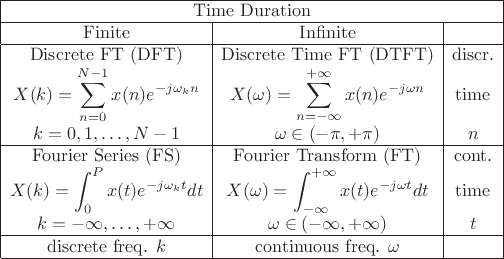 |
The Fourier transform can be defined for signals which are
Reference [264] develops the DFT in detail--the discrete-time, discrete-frequency case. In the DFT, both the time and frequency axes are finite in length.
Table 2.1 (next page) summarizes the four Fourier-transform cases corresponding to discrete or continuous time and/or frequency.
 |
In all four cases, the Fourier transform can be interpreted as
the inner product of the signal ![]() with a complex sinusoid at
radian frequency
with a complex sinusoid at
radian frequency ![]() [264]:
[264]:
| (3.1) |

In spectral modeling of audio, we usually deal with indefinitely long signals. Fourier analysis of an indefinitely long discrete-time signal is carried out using the Discrete Time Fourier Transform (DTFT).3.1Below, the DTFT is defined, and selected Fourier theorems are stated and proved for the DTFT case. Additionally, for completeness, the Fourier Transform (FT) is defined, and selected FT theorems are stated and proved as well. Theorems for the DFT case are detailed in [264].3.2